
A surf fishing rig is a series of hooks tied onto a leader line, with the addition of weights and swivels. The best rigs for surf fishing depend on your location, including factors such as water depth, tides, and the type of fish you plan to catch. Different types of rigs are necessary for different species, including bottom rigs like drop shot or Carolina.
Surf fishing is an exciting and fun way to catch fish from the shore. It requires knowledge of different rigs, appropriate tackle and bait selection, and familiarity with tidal patterns. With a few basic tips, anyone can start surf fishing for great results!
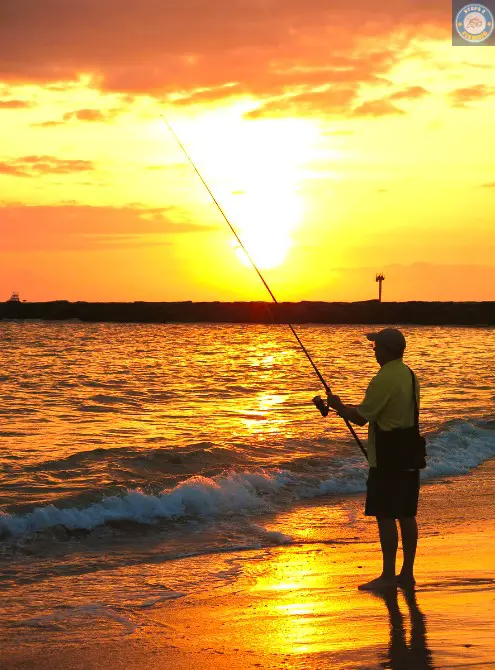
What is a Surf Fishing Rig?
The surf fishing rig is specially designed to withstand the dynamic forces of waves in saltwater environments. Featuring a long and sturdy rod, typically 9-14 ft in length, they come equipped with corrosion-resistant spinning reels capable of handling strong lines that can accommodate large fish. At the terminal end, a heavy weight is used to keep the bait at the desired depth.
Surf fishing demands a special type of rig designed to withstand the forceful waves and potent saltwater environment.
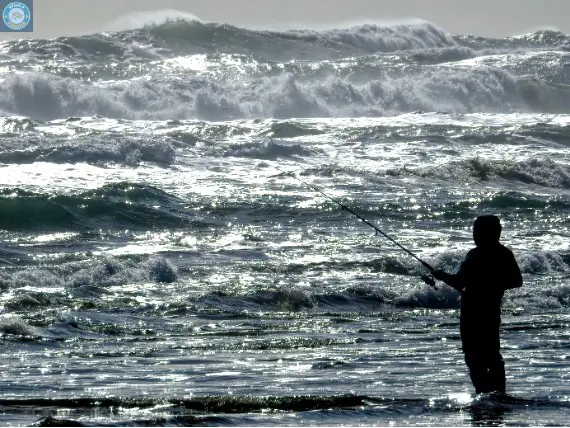
How to rig for surf fishing?
Rigging for surf fishing can be a tricky task due to the dynamic forces of saltwater waves. It is important to use a tackle that is strong enough to withstand larger fish and corrosion-resistant materials to prevent rust and wear. Start with selecting a rod and reel that is suitable for the application, then attach a heavyweight with a swivel at the terminal end in order to keep the bait at the desired depth. Finally, add your chosen hook or lures, and you’re ready to go surf fishing!
The Best Surf Fishing Rig
The best surf fishing rigs are those that can handle powerful waves and a potent saltwater environment. This means that rods need to be durable, long, and sturdy enough to withstand the strong pull of a large fish. The reels should also be corrosion-resistant and have a high line capacity to accommodate larger species. Lastly, the terminal tackle should be heavy enough for bait depth control.
The Perfect Rod for Surf Fishing Rig
The Perfect Rod for Surf Fishing Rig should be lightweight and durable, with a soft tip for better casting. It should also be enough length to cast into deeper waters while still providing optimal sensitivity.
Additionally, the rod should feature an anti-twist design, which helps to reduce line twists when fishing on the surf. Finally, anglers need to get a rod with the right action for their needs, whether it’s light or heavy, depending on the conditions, with all of these features and more.
Finally, make sure to pick a rod with the right power rating; this will help you find the optimal balance between sensitivity and casting distance. With these tips, anglers of any level can be confident in selecting the perfect rod for a surf fishing rig.
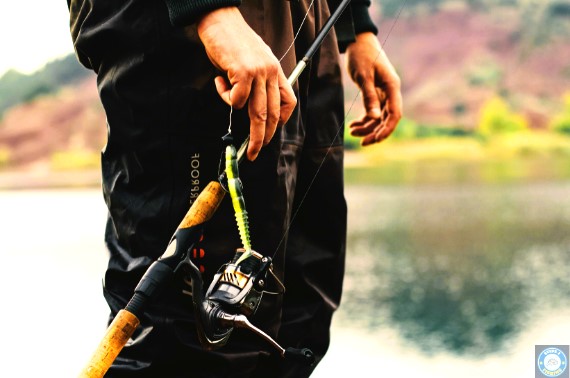
The Best Reel for Surf Fishing
When it comes to the best reels for surf fishing, you want something that is corrosion-resistant and strong enough to handle powerful lines. Spinning reels are ideal since they offer smooth line retrieval and come in a variety of sizes for different applications. For saltwater, look for those made from stainless steel or aluminum, and ensure that they have an oversized spool and sealed drag system.
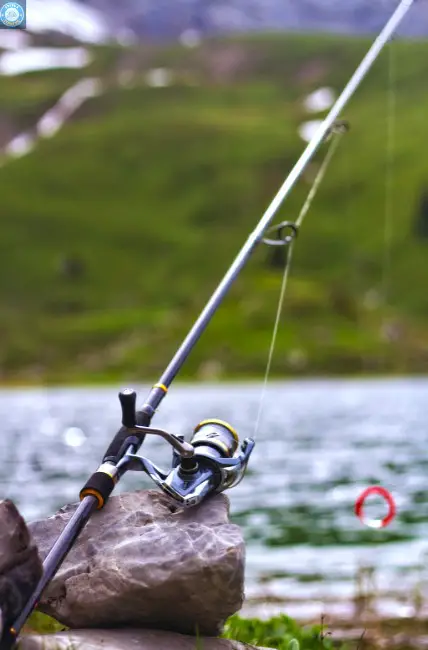
Discover the Different Types of Surf Fishing Rigs
Uncover the secrets of bottom rigs and top rigs – the two main contenders in the world of surf fishing. Whether you’re after floundering or aiming for bluefish or king mackerel near the surface, we’ve got the rig for you. Explore the versatility of the two-hook rig, the three-way rig, and the surf stick rig. Prepare to reel in the catch of a lifetime with these expertly designed rigs.
The most common type of surf fishing rigs are those designed for heavyweight baits such as live bait, frozen shrimp, and other fishy delicacies. These include a heavy bottom weight attached to the line, followed by a swivel and hook; this type of rig is intended to keep your bait at the desired depth regardless of the current.
Carolina Rig
Carolina Rig for surf fishing is one of the most common and successful methods used by experienced anglers. This rig utilizes a sliding sinker system that allows the bait to move through the waves more naturally while still allowing for plenty of control over the line’s placement. With its versatility, this type of rigging can be utilized in a variety of conditions, making it ideal for catching a range of fish species.
Bottom Rigs
Bottom rigs are the most common type of rigging used by surf anglers. This is because they keep the bait near the bottom and allow for steady retrieval with little effort from the caster. Bottom rigs can be simple or complex, depending on where and how you’re fishing. They can feature a single-hook rig, which has a leader tied to the eye of one hook, or multiple hooks, such as a 3-way swivel rig, which can be used to target more than one type of species. Either way, the bottom rig is an essential tool for any surf angler looking to target fish near the shoreline. It’s also possible to tie your own custom rigs using various types of knots and accessories like floats or sinkers.
Regardless of the rig you use, proper presentation is key to ensuring your bait stays near the bottom and can attract fish. With a little practice, surf anglers can master this technique and discover what works best in their area.
Top Rig
Another type of surf fishing rig is the top rig, which is designed to target fish that feed near the surface, such as bluefish or king mackerel. These rigs typically feature a lead weight attached to the line, followed by a swivel and hook; this helps keep your bait at the desired depth and also reduces tangles.
Drop Shot Rig
For surf fishing, a Drop Shot Rig is an essential piece of equipment. This simple setup involves fishing with a hook and weight attached to the main line. The rig can be used to target a variety of species from the shore or offshore. By adjusting the weight and bait size, anglers can customize their setup for different conditions and fish types. In addition to its versatility, the Drop Shot Rig has the distinct advantage of allowing anglers to feel the bottom of the ocean bed. It helps them identify where their bait is in relation to structure and how the current is affecting it. The rig also offers more control over line slack so fishermen can have better contact with their rigs while fishing. With proper rigging techniques, this simple setup can be an effective and efficient way to target fish from the surf.
Additionally, Drop Shot Rigs are perfect for situations where a fisherman desires more control over their presentation. By adding sinkers or other extra weight, anglers can slowly work an area with their bait and increase the chances of catching a fish.
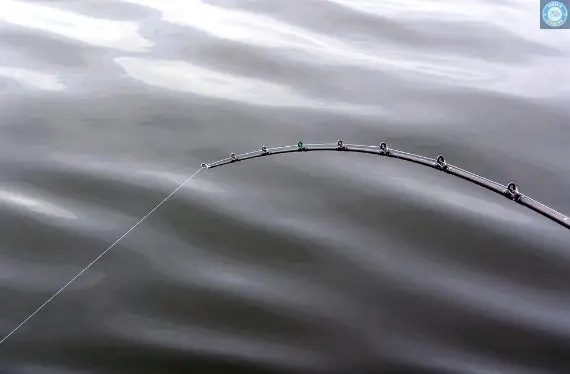
Flapper Rig
The best surf fishing rig for most anglers is a two or three-hook flapper rig with an appropriate weight. This type of rig allows the bait to move naturally with the current and presents it to fish in a natural manner. The weight should be chosen according to the depth that you wish to target, ensuring your bait remains in the strike zone.
Surf Stick Rig
A Surf Stick Rig is a specialized fishing setup designed for surf fishing. It consists of a long and sturdy fishing rod, a spinning reel, and a unique combination of terminal tackle. This rig is specifically designed to help anglers cast their bait and lures further into the surf zone, where larger fish species often lurk.
Two-hook Rigs and Three-way Rigs
Finally, the two-hook rig and three-way rigs are popular surf fishing rigs. Two-hook rigs feature two hooks attached to the line, usually with different-sized baits on each hook; this allows for multiple targeted species. Three-way rigs feature a lead weight and three separate lines all connected to one swivel; these can be used to target larger fish.

Valuable Tips for Surf Fishing Rig
Surf fishing is an art that requires mastering various techniques, including the use of rigs. It’s important to know how to put together a rig for surf fishing in order to be successful. Here are some tips for achieving success when rigging up your surf setup:
Choose the Right Hooks
When setting up your rig for surf fishing, it’s important to make sure you have the right hook size and shape for your bait. If you choose a hook that’s too small or too large, your bait may not stay on properly.
Utilize Sinkers
Using sinkers is an effective way to help keep your line in place when surf fishing. Weighted sinkers come in a variety of sizes and can be used for various depths of water; experiment with different weights to determine which works best for you.
Experiment With Different Rigs
Different types of rigs are used for surf fishing, so it’s important to experiment with different ones until you find the one that works best for your situation. Use the Right Length of Leader.
The leader is the section of line between the main line and your weight or hook. The length of the leader depends on the depth of water; for shallower depths, a short leader is ideal, whereas a longer one is better suited for deep water.
Attach a Float
Floats can help you keep an eye on your bait and ensure that it stays at the desired depth. Floats also come in a variety of sizes and are great for keeping your bait in place when casting.
Choose Quality Swivels
Swivels are key components in any surf fishing setup, so make sure you choose quality swivels that will last. High-quality swivels are important for preventing line twists and helping your rig to stay in place while you’re out on the water.
Use a Variety of Baits
Experimenting with different types of bait is essential when surf fishing. Live bait, such as worms, shrimp, or crabs, can be effective for catching bigger fish, while artificial bait, such as jigs and lures, can help you attract smaller fish.
With these tips in mind, you’ll be well on your way to a successful surf-fishing adventure! Keep experimenting with different rigs, baits, and techniques to maximize your chances of catching the big ones.

Some common mistakes to avoid when surf fishing
When it comes to surf fishing, there are a few common mistakes that can be easily avoided:
- Make sure your tackle is suitable for the application: lightweight tackle for shallow-water species and heavier tackle for deep-water species.
- It is important to ensure your rigs are properly rigged. If they aren’t correctly set up, you may lose your bait or even catch a fish without being able to bring it in.
- Be sure to check your rigs regularly since corrosion can occur due to saltwater conditions; by taking the time to do this, you can ensure optimal performance and avoid disappointment when trying to catch those big ones!
Conclusion
Regarding the Surf fishing Rig, it can be an incredibly rewarding and enjoyable activity when done properly. By taking the time to understand the principles of Surf fishing, learning how to identify optimal conditions for success, and selecting the appropriate tackle and bait for your intended species, anglers will maximize their chances of success while enjoying a safe and memorable experience on the water.
FAQs
Q. Do I need different rigs for different fish?
A. Choosing the right rig depends on the type of fish you’re targeting. Different fish have different preferences.
Q. What’s the ideal bait to use with a surf fishing rig?
A. The best bait varies by location and target species, but options like shrimp, sand fleas, and cut bait often work wonders.
Q. How do I prevent tangles when using multiple hooks on my rig?
A. Using small pieces of plastic tubing or rigging beads can help prevent tangles when using multiple hooks on your surf fishing rig.
Q. Is there a specific time of day that’s best for surf fishing with a rig?
A. Early morning and late evening are often prime times, but it can vary by location and the fish’s feeding habits.
Q. Can I use artificial lures instead of live bait with a surf fishing rig?
A. Artificial lures can be effective with a surf fishing rig, especially for species that are attracted to flashy or moving lures.
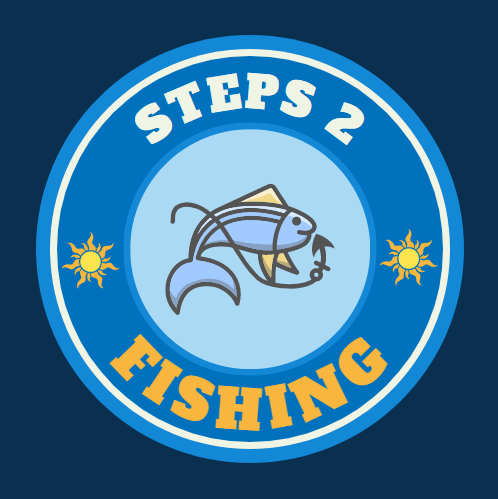

Leave a Reply